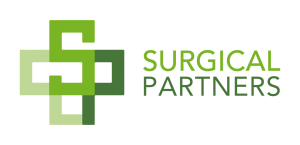While you've perhaps run your medical practice with the same procedures for years, you're possibly starting to see that you can't maintain those tactics forever. What worked for you just five or ten years ago just isn't feasible now with more complex demands in the healthcare field.
When you put into perspective how complex managing health has become, including insurance requirements, and regulations, you have to get yourself supremely organized. How do you do it, though, when you've kept things the same for over a decade?
Your accounting department is where the biggest problems can occur, especially when still using paper-based systems. At the top of this is bringing better workflow, which is a term you've maybe ignored due to thinking every department works on automatic pilot.
In truth, your accountants likely experience more headaches than you think without streamlining procedures to adhere to today's demands.
Here's how to achieve streamlined accounting for medical practices to finally reduce human errors and allow for daily reconciliation.
The Expense of Manual Entry
You may not readily notice the cost of doing manual entry in your medical practice, until you start seeing expense sheets. It's worth keeping in mind that for every balance sheet and revenue report you create on paper, you'll have to duplicate it in order to keep extra copies on hand or several excel files saved across different folders
Once in the hands of your accounting department, they'll have to file these in a physical file cabinet where chances of a document getting lost increases.
Consider how much downtime you'll have trying to locate the errors, then taking the time to correct it. Employing the 1-10-100 rule, you'll see it adds up to $1 for prevention costs, $10 for every correction, and $100 for failure costs.
Fighting the Volume of Medical Transactions
Now that you're firmly established in the medical industry, your recent growth likely brought on excess volume in transactions. With possibly thousands of these reciepts, invoices, creditnotes, reversals and pre-payments brought into your practice, imagine the pressure your staff are under when it's entirely manual.
Reconciliation becomes a major problem once your accounting employees start manually reconciling your bank accounts with recorded receipts. Doing so may require extra steps that slows down productivity to a crawl.
In some cases, it may mean having to make separate trips or phone calls to your bank or accountant to confirm specific figures and avoid a major discrepancy.
Organizing Specific Billings
Trying to keep billings for facility fees and doctor share for your contracted doctors can lead to just as many errors without better organization. Splitting billings from reports pulled into excel almost always leads to some mistakes, no matter how careful you think your process is.
Because of the sheer number of billings you have to deal with, it's time to go completely paperless and use a digital system. The question is, what's the best choice when you feel you don't have time for a transition?
Finding the Right Digital Solution
At Surgical Partners, we've created a solution that streamlines workflow so you don't end up with obstructions in keeping your productivity high. The way forward is to use a financial management platform that takes on the three expensive problems listed above.
A program eliminating the need for manual data entry and using granular transaction data brings an entirely new world from how you worked with your finances in the past. Most importantly, you'll have a digital bank reconciliation feature allowing matchups on-screen without requiring end of period reports, phone calls or separate excel spreedsheets.
Contact us to learn more about how our platform works and how it brings real-time data to catch mistakes now rather than next month.




